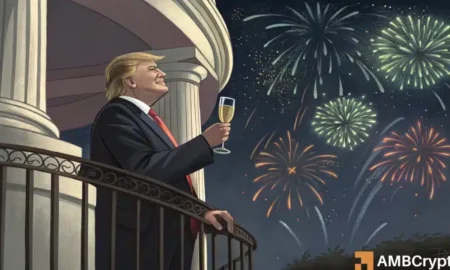The Rise of USD1: A New Player in the Stablecoin Market
With the recent listing of USD1 on Binance, the stablecoin market has experienced a remarkable surge in activity. Following this event, platforms like PancakeSwap and UniswapV3 have witnessed a significant uptick in daily trading volumes, effectively transforming USD1 into a notable player in the cryptocurrency ecosystem. This surge is not merely a fluke; it reflects a strategic approach to integrating USD1 into the broader blockchain infrastructure.
Enhanced Integrations Fueling Growth
The BNB Chain, in response to this rising popularity, has taken proactive measures to facilitate continued growth. With numerous integrations announced on June 3rd, including wallet plug-ins and improved CEX routing, the network aims to reduce friction for both merchants and retail users. These enhancements pave the way for seamless on-chain payments, making it easier for users to adopt USD1 in their transactions. This streamlined experience not only attracts more users but also positions USD1 as a viable alternative in the competitive stablecoin landscape.
World Liberty Financial’s Aggressive Strategy
World Liberty Financial (WLFI), the issuer of USD1, is equally ambitious in its strategy. Having introduced restaking yields and actively promoting USD1 in the high-stakes memecoin environment of PancakeSwap, WLFI is targeting high-frequency traders within the BNB Smart Chain. Early indicators suggest that this aggressive marketing approach is paying off, with transfer counts significantly higher than pre-listing levels. This suggests that traders are increasingly willing to engage with USD1, despite the broader market’s cooling trends.
Concerns Over Centralization
However, the success of USD1 comes with its own set of challenges. A concerning aspect is the concentration of holdings: two wallets control approximately 84% of USD1, with a third adding up to a staggering 93%. Such centralization poses risks, particularly for a stablecoin valued at $2 billion. Critics are rightly worried that a single governance misstep could drastically affect USD1’s liquidity, potentially undermining the trust that traders have in it.
WLFI’s Strategy for Supply Dilution
In response to these criticisms, WLFI has proposed a solution: “airdrop dilution.” This concept involves distributing USD1 through giveaways to diversify its holdings and mitigate custody risks. The success of these initiatives will be paramount. If WLFI can implement timely and effective distribution plans before traders lose interest, USD1 may transition from a speculative asset to a stablecoin mainstay, widening its acceptance and usage across various platforms.
Looking Ahead: The Future of USD1
The coming months will be critical for USD1 as it navigates the volatile landscape of cryptocurrency. With promising signs of increased activity and strategic integrations, USD1 is looking to solidify its foothold in the stablecoin market. However, the challenges posed by centralization and the need for a more dispersed governance structure cannot be overlooked. How WLFI addresses these issues will ultimately shape the narrative surrounding USD1—will it become a staple in digital finance or remain a speculative asset? Only time will tell.

















